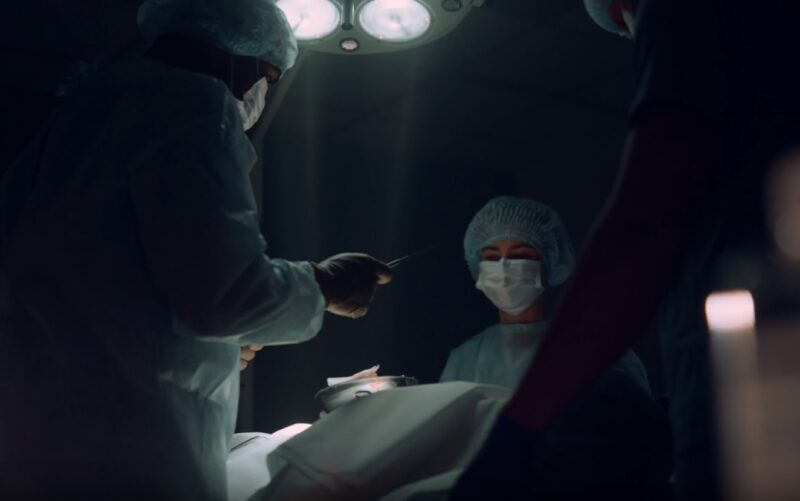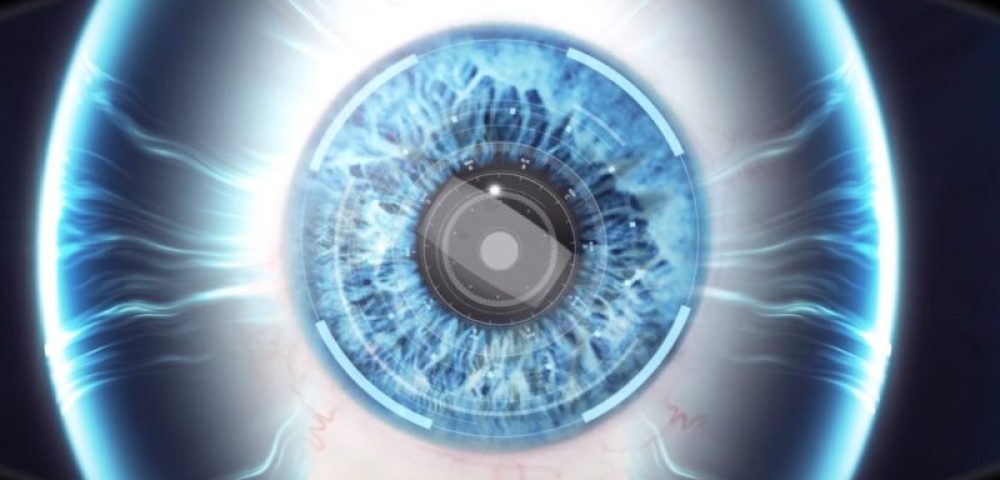Cataract surgery, while widely celebrated for its ability to restore vision, is not without its drawbacks. The best way to avoid complications is to visit only well-known experts in the area.
On the other hand, even if the process is done by an experienced surgeon, there could still be some chances for issues.
1. It Can Be Expensive

Cataract surgery, despite being a routine procedure, can be a financial hurdle for many. The expenses extend beyond the surgery itself, enveloping aspects like pre-operative tests, post-operative care, and sometimes, additional corrective procedures.
The direct costs of cataract surgery can be a barrier to many, especially for those without comprehensive health insurance. From the surgeon’s fee to the facility charges and the cost of intraocular lens (IOL) implants, every element comes with its price tag.
Even with insurance, patients often grapple with out-of-pocket expenses, such as deductibles and copays, which can be financially straining. Moreover, the indirect costs, often overlooked, can subtly add up.
These may include the cost of prescription medications, transportation to and from the surgical facility, and potential lost wages during the recovery period. For individuals living on a fixed income, such as retirees, managing these unexpected expenses can be particularly challenging.
2. Risk of Complications

While the procedure is generally deemed safe, potential complications, both during and after the surgery, can be concerning for patients. Intraoperative complications, although rare, can occur, posing immediate risks to the patient.
Instances such as posterior capsule rupture or the dropping of lens fragments into the vitreous can complicate the procedure and impact the visual outcome. Managing these complications may require additional surgical interventions, extending recovery time and potentially leading to additional costs and stress for the patient.
One of the most serious problems that a patient could face is the Endophthalmitis. The experts from the Hull University Teaching Hospitals provided us with more details about this condition:
“It is possible to develop this serious infection inside the eye. The treatment for this type of infection involves further operation(s) to take samples and to allow injection of antibiotics into the eye. Treatment has to be very prompt if it is to be effective. 50% of cases of endophthalmitis do not recover sight despite treatment. Very rarely does an eye have to be removed because of infection”.
Postoperative complications, such as infection, elevated intraocular pressure, and retinal detachment, while infrequent, are potential risks that can adversely affect the eye’s health and visual acuity.
However, as technology in medicine is improving, the percentage of complications is also getting lower. A study from Jorge L. Arango can give us the real insight.
“Thirty-one patients with postoperative wound complications were identified from a total of 2041 elective cataract extraction procedures (1.5%)”.
Timely and appropriate management of these complications is crucial to prevent long-term adverse outcomes and may involve additional treatments or procedures. The psychological impact of experiencing complications should not be understated.
Patients may experience anxiety, stress, and fear, which can impact their overall wellbeing and recovery. Ensuring psychological support and clear communication is vital in navigating through any complications that may arise.
3. Different Success Rate
The outcomes of cataract surgery, while predominantly positive, can be varied. Factors such as the surgeon’s expertise, the patient’s overall health, and the presence of co-existing eye conditions can influence the final visual result.
Some patients may experience suboptimal visual outcomes due to residual refractive errors or the development of posterior capsule opacification. These individuals may require further interventions, such as laser treatment or the use of corrective eyewear, to achieve optimal vision, which can be a source of frustration and disappointment.
The expectation management is crucial in ensuring patient satisfaction post-surgery. Some individuals may harbor unrealistic expectations regarding their visual outcomes, leading to dissatisfaction even with objectively successful surgery.
Ensuring that patients are well-informed and have realistic expectations is crucial to achieving satisfaction.
4. Lifestyle Adjustments
Dealing with this procedure often requires a period of adjustment in the lifestyle, particularly during the recovery phase. The postoperative period, while generally uneventful, does demand certain modifications in daily activities to facilitate smooth healing and optimal outcomes.
The immediate recovery period post-cataract surgery, typically spanning a few weeks, demands adherence to specific guidelines and restrictions. Patients are often advised to avoid strenuous activities, heavy lifting, and exposure to potential contaminants like dust and grime.
This period of activity restriction can be particularly challenging for individuals who lead an active lifestyle or those whose occupations demand physical exertion. The necessity to administer post-operative eye drops several times a day can be a significant adjustment.
Managing the drop schedule, ensuring a sterile technique, and avoiding direct eye rubbing or pressure necessitates a level of vigilance that can be cumbersome for many. For individuals who may struggle with manual dexterity or memory recall, this can be a particularly daunting task.
It is crucial to take proper care of your eyes after the surgery as well. Additionally, the potential need to rely on assistive eyewear, even temporarily, can be a new adjustment for those accustomed to clear vision with contact lenses or previous glasses.
Navigating through this transient phase of visual fluctuation, where the eyes are adapting post-surgery, demands patience and a willingness to modify daily routines and habits accordingly.
5. Potential for Further Surgery

While cataract surgery is renowned for its high success rate and transformative visual outcomes, it is not devoid of the potential need for additional surgical interventions down the line.
This possibility, while not universal, is a crucial consideration for individuals contemplating the procedure. Posterior Capsule Opacification (PCO), colloquially referred to as a secondary cataract, is a phenomenon where the lens capsule thickens post-surgery, leading to visual disturbances.
The management of PCO involves a straightforward laser procedure known as YAG laser capsulotomy. While generally considered safe and effective, the necessity for an additional procedure can be a source of anxiety and inconvenience for patients.
Residual refractive errors post-surgery may necessitate further interventions to achieve optimal visual acuity. Procedures like LASIK or PRK may be considered to fine-tune visual outcomes, particularly for those desiring independence from glasses or contact lenses.
The decision to undergo additional surgery comes with its own set of considerations, risks, and potential financial implications. The potential for retinal complications, such as retinal detachment, though rare, may necessitate further surgical management.
The prospect of additional surgery, with its inherent risks and recovery period, can be a significant disadvantage and a source of apprehension for those considering cataract surgery.
6. Quality of Vision

The pursuit of crystal-clear vision is often the driving force behind the decision to undergo cataract surgery. However, the post-operative visual experience can sometimes fall short of expectations, presenting a myriad of challenges and adjustments for the patient.
Some patients may experience visual phenomena such as glare, halos around lights, or difficulty with night vision, particularly with certain types of intraocular lenses (IOLs). These visual aberrations can impact daily activities like driving, particularly during nighttime, and may require adjustments in lifestyle and routines to ensure safety and comfort.
The choice of IOL can significantly influence the post-operative visual experience. While multifocal IOLs offer the potential for spectacle independence, they may be associated with more prominent visual side effects compared to monofocal IOLs.
Ensuring that the chosen IOL aligns with the patient’s lifestyle, visual demands, and tolerance for potential side effects is paramount to achieving satisfactory outcomes. Despite optimal surgical outcomes, some individuals may still find themselves reliant on spectacles for certain tasks, such as reading or computer work, due to presbyopia or residual refractive error.
This continued dependence on assistive eyewear, while often minor, can be a source of frustration for those who had hoped for complete spectacle independence post-surgery.
FAQs
Can cataract surgery be performed on both eyes at the same time?
No, typically cataract surgery is not performed on both eyes simultaneously. Surgeons generally operate on one eye at a time to minimize the risk of complications affecting both eyes and to ensure proper healing. The second eye can usually be scheduled for surgery a few weeks after the first.
How long does it typically take to recover from cataract surgery?
The initial recovery period for cataract surgery is relatively short, with most patients resuming their usual activities within a few days to a week. However, complete healing and stabilization of vision might take several weeks to a few months. During the recovery period, patients are advised to follow specific guidelines to protect their eyes and facilitate healing.
Is cataract surgery painful?
Cataract surgery is generally not painful as local anesthesia is used to numb the eye, ensuring that the patient does not experience pain during the procedure. Post-operatively, some patients might experience mild discomfort, itching, or foreign body sensation, which usually subsides within a few days. Pain is typically minimal and can often be managed effectively with over-the-counter pain relief and prescribed eye drops.
Can cataracts return after surgery?
Once a cataract has been removed, it cannot return. However, some patients may experience a condition known as posterior capsule opacification (PCO), where the lens capsule that holds the artificial lens becomes cloudy, causing similar vision problems as a cataract. PCO can be effectively treated with a simple laser procedure known as YAG laser capsulotomy.
Are there alternative treatments to cataract surgery?
Currently, surgery is the only effective treatment to remove a cataract and restore clear vision. While there are no alternative treatments that can make a cataract disappear, in the early stages, visual impairments caused by cataracts may be managed with corrective eyewear, enhanced lighting, or magnifying lenses to facilitate daily activities.
Last Words
While there are possible downsides, it is still one of the safest and most efficient procedures when it comes to eye surgeries. However, the success rate is individual. On the other hand, the chance of facing any complications will get much lower if you choose only reliable and well-known opthamologist.
Related Posts:















